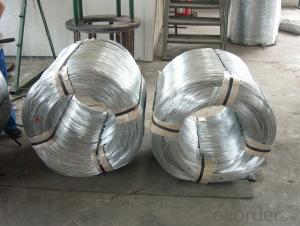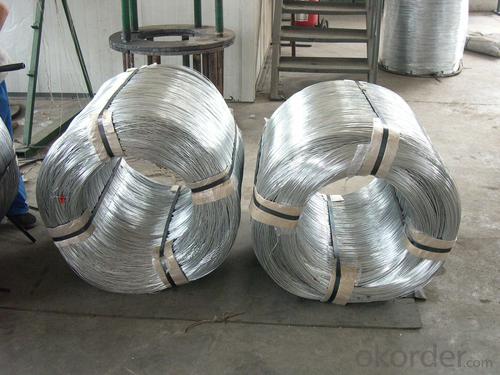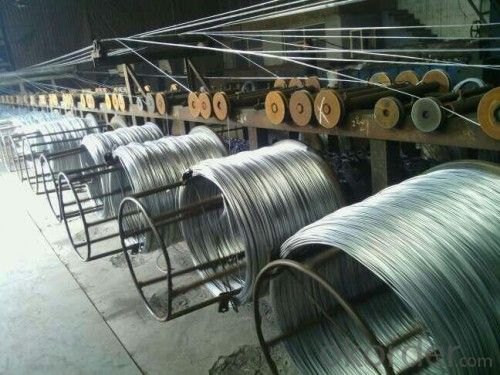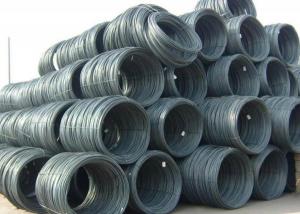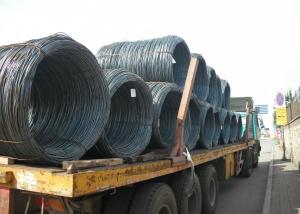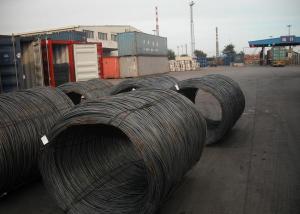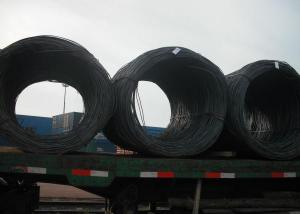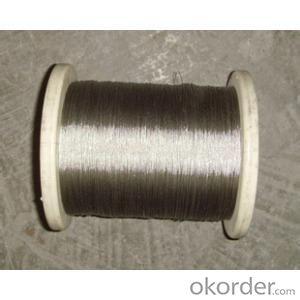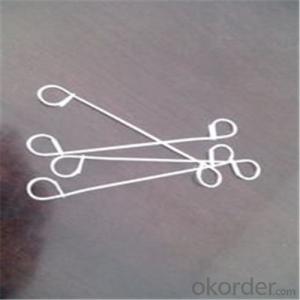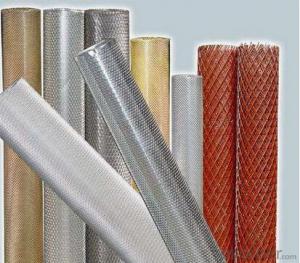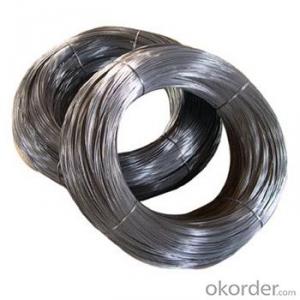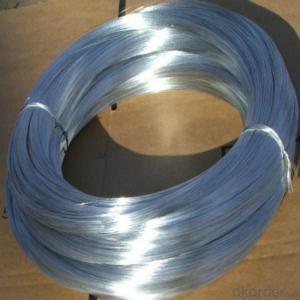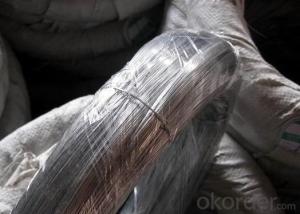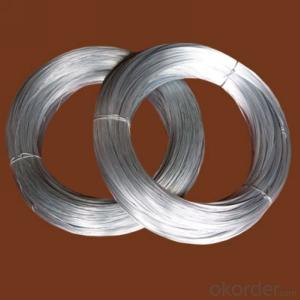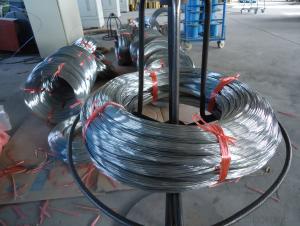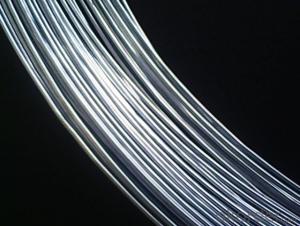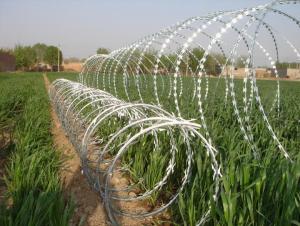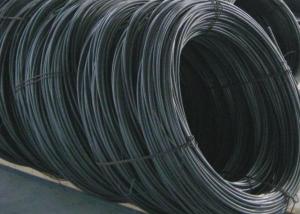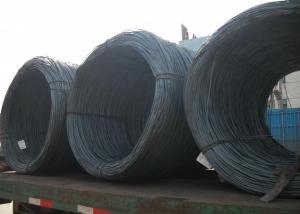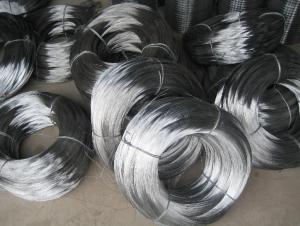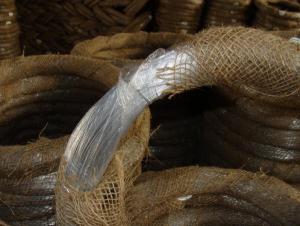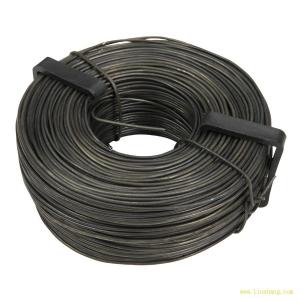Class B Zinc Layer Of Hot Dipped Galvanized Wire
- Loading Port:
- China Main Port
- Payment Terms:
- TT OR LC
- Min Order Qty:
- -
- Supply Capability:
- -
OKorder Service Pledge
OKorder Financial Service
You Might Also Like
Packaging & Delivery
| Packaging Detail: | Packaging: one kind of packaging is 2kg/coil-150kg/coil, plastic bag inside and woven bag outside. second kind of packaging is 2kg/coil-150kg/coil, plastic bag inside and hessian cloth outside. |
| Delivery Detail: | within 15-20 days after receiving your deposit |
Specifications
1:Material:Low Carbon Wire(Q195)
2:Wire Diameter:BWG7-BWG36
3:Coil Weight:2-150kg/coil
4:Packaging: plastic bag and woven bag
electro/hot dipped galvanized iron wire/binding wire
1: MATERIAL: LOW CARBON STEEL WIRE(Q195) |
2: WIRE DIAMETER: BWG8-BWG38(0.102MM-4.572MM) |
3: ZINC COATING: ELECTRO GALVANIZED: 4-13G/M2 HOT DIPPED GALVANIZED: 30-50G/M2 60-100G/M2 100-200G/M2 200-300G/M2 |
4: TENSILE STRENGTH: 35KG-155KG/MM2 |
5: ELONGATION RATE: 10%-35% |
6: GALVANIZED WIRE CAN BE CLASSIFIED: ELECTRO GALVANIZED WIRE; HOT DIPPED GALVANIZED WIRE; REDRAWING WIRE. |
7: PRODUCTION PROCESS OF GALVANIZED WIRE: STEEL ROD COIL---WIRE DRAWING--- WIRE ANNEALING---RUST REMOVING---ACIDING WASHING---BOILING---DRYING---ZINC FEEDING---WIRE COILING
|
8: PACKING: 3.7KG/COIL-250KG/COIL, PLASTIC BAG INSIDE AND WOVEN BAG/HESSIAN CLOTH(GUNNY) OUTSIDE.(YOUR REQUIREMENT IS AVAILABLE). |
WE BELIEVE THAT GOOD AFTER-SALE SERVICES IS ONE OF THE MOST IMPORTANT WAYS TO SUSTAIN THE LIFE OF OUR FACTORY DIRECTLY PURCHASE FROM MY FACOTRY CAN REDUCE THE EXPLOITATION OF WHOLESALERS TO LOW YOUR COST. PLEASE FEEL FREE TO CONTACT TO US FOR MORE DETAILED INFORMATION OF SENDING US YOUR SPECIFIC REQUIREMENTS. YOUR RESPONSE WILL BE HIGHLY VALUED. |
- Q: 1) How does the type of wire affect resistance?2) How does the length of wire affect resistance?3) How does the diameter of the wire affect resistance?4) How does temperature affect resistance?
- 1) How does the type of wire affect resistance? Wires can be made of different materials , and each material has its own resistance properties, some materials have high resistance and others have low resistance. 2) How does the length of wire affect resistance? Think of it this way , when increasing the length of the wire it will be harder for the electrons to pass through, which means higher resistance it will be. 3) How does the diameter of the wire affect resistance? Small diameter wires have high resistance , because when the diameter of the wire is small it will be hard for the electrons to pass through the wire, unlikely if it has big diameter then it has small resistance because now the electrons can move easy because of its big diameter. 4) How does temperature affect resistance? Temperature also effects wires resistance, when the temperature in the wire increases the resistance will also increase, to understand why imagine your self holding a wire and buring some area in it , what will happen is the heat will melt that section and cut the wire so its like an open circuit which means very high resistance (No electrons will pass through the wire). Good Luck.
- Q: Our house ground wire is very long but our live and natural wires are very short. Once there was a surge in our telephone line system and both my Belkin Surge Protectors seemed to have not stopped it. The surge was stopped at my last protector when its sensitive fuse blew (it was a 10 ohm resistor fuse). Is it possible that since the natural wire is shorter than the ground wire the surge wantted to go through my PC and into the natural wire? Or is it just because the 10 ohm resistor fuse was a bit too sensitive or something? (Well it didn't blow up when there was no lightning outside)I'm thinking of making my natural wire longer by extending it so a surge finds the ground wire more attractive, is this advice able?
- Your ground wire should go to your breaker box, then to a ground rod or some other good ground point with a large #6 solid wire. I don't understand why your ground wire should be substantially longer than your neutral or hot wires. Making your neutral wire longer would probably have little effect. You could also have a poor connection in your ground wiring. Maybe some corrosion has accumulated somewhere. A surge protector can't operate correctly without a good ground. It sounds like you should have an electrician check your electrical system. This could save you money in the long run.
- Q: What's the use of the live wire,neautral wire and earth wire in a plug? The purpose
- Other guy is correct for the U.S., but from your wording, I think you live in the U.K. The live (hot) and neutral wires convey the power to the device or appliance, with the hot have a potential of 220-240 volts AC, with respect to the neutral, like the + and - terminals of a battery. The ground/earth connection is for safety, and no current flows in it under normal use. It is connected to any metal parts of an appliance. The neutral is connected to ground in the breaker box or somewhere in your basement or nearby. If there is a short in an appliance and a high voltage gets connected to a metal part, this could be a lethal hazard. But since the metal parts are connected to safety ground, it instead causes a circuit breaker to pop, disconnecting the voltage. .
- Q: The wire from the cicuit breaker
- The standard house dryer circuit is fused at 30 amps and is wired with number 10 wire (no. 10 wire is rated at 30 amps). I've wired many of them in my life, including those which are checked by the county/city inspectors.
- Q: How could you relate greater wire length resulting in greater resistivity to the context of home
- Greater wire length will certainly give you a higher resistance. Since heat is measured in watts, and watts (W) =I^2R, where I=Current and R= resistance, then if you double the resistance of a wire (by making it twice as long) you also double the ammount of watts lost in the wire. Since watts equates to heat, this ammount of heat will make the wire hotter. If you use an extension lead, and wind it round a drum, it can get very hot indeed.
- Q: what are the differences between wired and wireless microphones? and what are the Pros and Cons of having a wired mic, pros and cons of a wireless?Thanks......
- The instant one does no longer have the mute function together as the under pressure out one does. The instant one you ought to cost whilst it dies and the cable isn't long adequate to attain your ear together as its plugged into the console.
- Q: Im wiring my pioneer deh x3600ui to my pontiac grand am gt 2002 directly without a factory harness. Any diagrams out there i can use? The red wire on my pioneer is for the ignition but i cant find that wire on the pontiac.
- Some okorder /
- Q: I bought a chandelier from Ikea and I am having trouble wiring it. The colors do not match the colors in the ceiling. There is also one extra wire in the ceiling. This chandelier is to be controlled by a switch. Chandelier wire colors:WhiteBlackGreen/yellowCeiling wire colors:RedYellowBareBlackPlease help! Thank you!
- You do have a problem there, the colors in the ceiling are not standard. So black goes to black(hot), then green/yellow goes to the bare copper (ground). Now the tricky part is, you'll need a test meter to figure out if the yellow in the ceiling is the neutral which should go to the white. I would test between the yellow and the black in the ceiling (with the switch on) to see if there is 120V there. If there is problem solved, if not check between the red and yellow. I am guessing that either the red or the black will be the hot and the yellow will be the neutral. The one you do not use, I would cap off either by putting a wire nut on it or electrical tape.
- Q: What are some of the basic advantages of twisted pair wiring?
- Lower noise due to inductively coupled current from interference sources, such as (say) a motor or AC power line. When a changing magnetic field is near a coil of wire, it induces a current in the wire. If that wire is your network cable, the current will be misinterpreted by the receiving NIC as voltage generated by the sender, which will cause packet corruption. With twisted pair wire, after a twist the magnetic field ends up creating a current in the opposite direction since the order of the wires has switched. Therefore, the current induced from adjacent twists of the wire ends up cancelling. (Assuming the magnetic field strength is consistent over the distance of 2 twists.)
- Q: we need to know if we don't connect the red wire and just cap it off.
- Generally, a standard R 14-3 wire running from the wall switch to the ceiling fan will have four wires (red - hot, black - hot, white - neutral and copper or green - ground). In most cases, this type of wiring configuration is used to power the fan and light kit independently from one another. If however your new fan only requires a black, white and green - my advice would be to cap off the red wire - unless the new fan has a light kit with a separate power option. If this is the case, the light kit will be powered by the red, white and green wires. Good luck!
Send your message to us
Class B Zinc Layer Of Hot Dipped Galvanized Wire
- Loading Port:
- China Main Port
- Payment Terms:
- TT OR LC
- Min Order Qty:
- -
- Supply Capability:
- -
OKorder Service Pledge
OKorder Financial Service
Similar products
Hot products
Hot Searches
